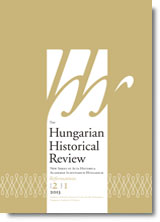Holbein’s “Dead Christ” in Basel and the Radical Reformation
Holbein’s “Dead Christ” in Basel and the Radical Reformation
Author(s): Pál ÁcsSubject(s): History
Published by: Magyar Tudományos Akadémia Bölcsészettudományi Kutatóközpont Történettudományi Intézet
Summary/Abstract: My intention in this essay is to examine Hans Holbein’s painting Dead Christ (1521–1522) from a new point of view. Earlier interpretations of the painting which approached it from various perspectives, ranging from late medieval piety and the Renaissance to the Reformation and early modern “modernism,” have proven unsatisfying. I suggest, as an immediate context for the interpretation of the message of the painting, the so-called “Radical Reformation,” the views of which were closely linked to the notions of Erasmus advocating the spiritual reformation of humankind. I argue that both Erasmus and his portrait painter Holbein belonged to the same intellectual group and the painter sought to emphasize the real death and true Resurrection of Christ as a human being. By doing so with great artistic force, he got close to the central message of the radical Reformation, namely the denial of the divinity of Christ and the recognition of his human nature. Consequently, Dead Christ also captures the central tenets of the spiritualism of the Radical Reformation.
Journal: The Hungarian historical review : new series of Acta Historica Academiae Scientiarum Hungaricae
- Issue Year: 2/2013
- Issue No: 1
- Page Range: 68-84
- Page Count: 17
- Language: English

